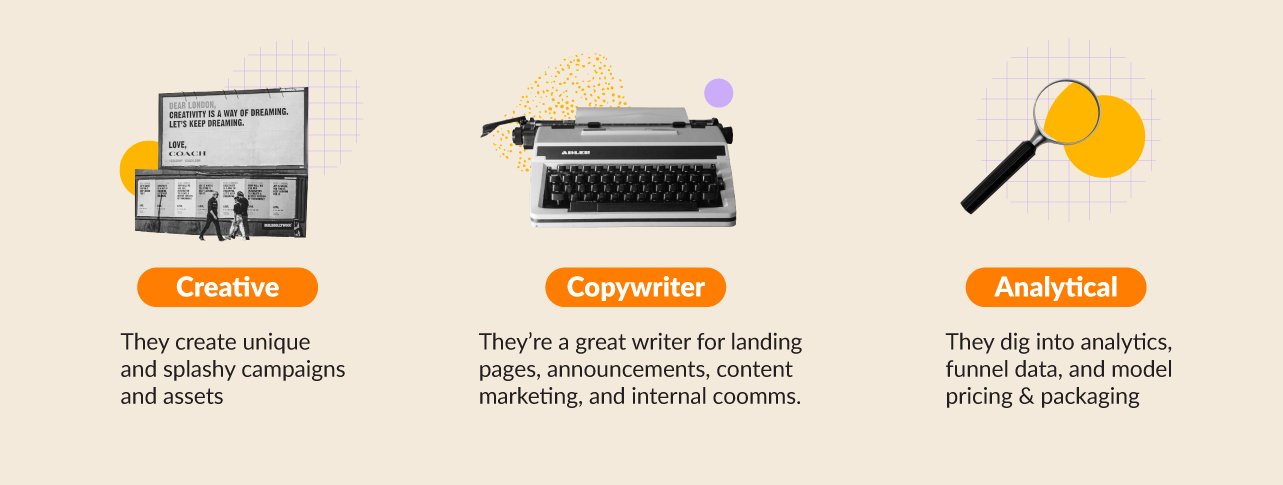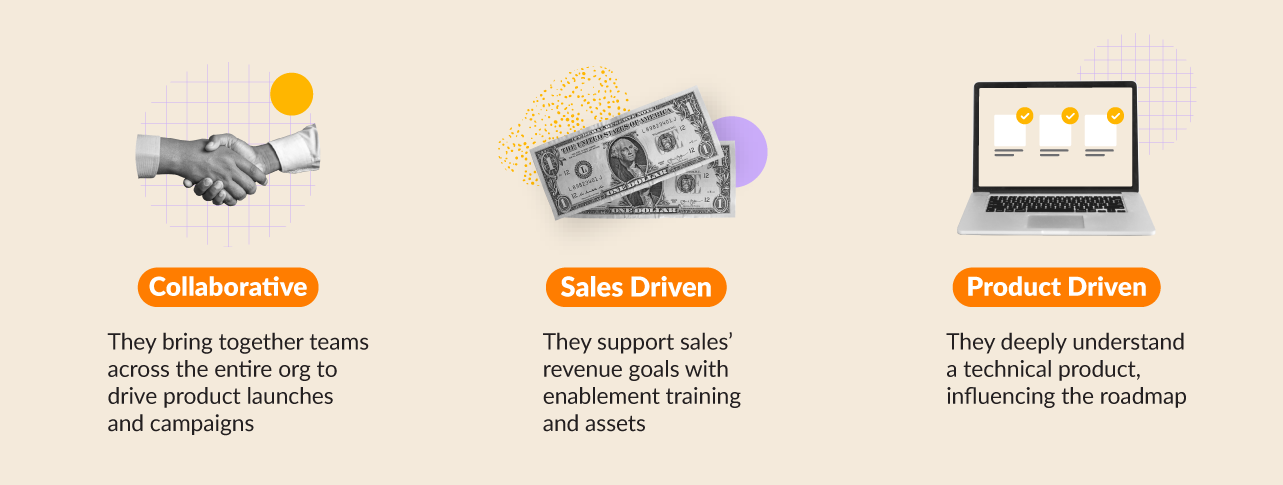How Product Marketing changes at every company stage
Rae, Sheena, and Arielle—leaders from our team met with Ambika Nigam, CEO & Founder of Zeit, a career pivot platform, to discuss the different styles of product marketing management and how the role changes depending on the company stage.
Zeit provides programs that use a mix of science and art to help professionals make their ideal career pivot.
What product marketing looks like at each company stage
Product marketing spans company types and industries. Depending on the current stage of an organization, a product marketer's main focuses, opportunities, and challenges will look different. Why does the skillset of product marketing vary and what should you know if you're hiring your first product marketer? Watch the discussion or read our recap below to learn more.
We feel confident helping technical B2B companies navigate the nuances of product marketing because, between our in-house experience and our client experience, we’ve worked with a lot of companies in different stages and industries. Pre-seed to IPO and industries including developer tools, healthcare, fintech, and more.
We’ve seen how product marketing is done at a lot of companies
Every company stage is on a spectrum, which dictates the focuses, opportunities, and challenges that product marketing management has.
Get our monthly product marketing newsletter: SUBSCRIBE
1. Early Stage
We define early-stage companies as pre-seed through Series A. At an early stage, product marketers typically focus on naming, positioning, messaging, finding product-market fit, early customer acquisition, and relationship building. There are opportunities to make a big impact on the organization, have a tight relationship with product and sales, and have deep knowledge about what’s going on across the organization.
Take note that a lot of early-stage companies don’t hire their first marketer until Series A and oftentimes, a product marketer is their first marketing hire. Being the first and only marketer comes with its challenges—usually, there’s a small budget, projects are DIY, and there’s little team support.
Although this type of environment can be stressful, there are ample learning opportunities. A successful product marketer in early-stage companies is a Jill of All Trades who’s eager to get scrappy, dissect the noise, and execute the right work. This is also where job applicants may not have explicit product marketing experience, but rather, have overlapping skills from sales, copywriting, analytics, and the like.
2. Growth Stage
We define growth stage companies generally as series B to D even though there is a wide range between these series. They’re likely still in the process of launching new products, breaking into new markets or industries, and expanding their products into a platform solution. At the growth stage, the landscape looks quite different from the early days. Product marketers might be part of an actual marketing team or a product marketing team in charge of other product lines. Their focus shifts to supporting growth and product launches alongside the Demand Gen / Growth Marketing teams.
Other areas of focus include: supporting a rebrand, pricing and packaging, leveraging data, account-based marketing, cross-selling and upselling, and reducing churn. As you can tell, product marketers have a richer opportunity here to grow their personal brands in and out of the organization and execute unique, splashy work. Done the right way, product marketing becomes a strategic asset and core to the business.
What challenges do product marketers face during the growth stage? There may be no distinct budget and ambiguity as to where product marketing fits within the organization. Although they’re not anyone’s boss, product marketers are in charge of bigger campaigns and need leadership and advocacy skills to garner support across departments whether it’s for spend, time, or other contributions. This is where prior cross-department experience becomes especially handy; for example, a salesperson-now-product-marketer knows how to get what they need from sales, or further contribute to sales enablement.
3. Enterprise Stage
We define the enterprise stage as Series D plus, IPO, or private equity. with large revenues At this point, product marketers focus on segmentation and specific sections of the market (verticalization), and oftentimes these types of companies are dealing with multiple acquisitions. Product marketing management has to bring all products under one roof and weave them into one cohesive platform story. Acquisitions entail sales training, entering new markets, and sometimes localization.
Logistically, there should be a full-on product marketing team with each role finely tuned specifically to the organization’s needs. Product marketers enjoy opportunities like brand recognition, being part of a well-funded and well-staffed team, and typically have the work-life balance that comes with total compensation for their position. On the other hand, since product marketers’ roles are narrower and their work exists within established paradigms and processes, they’ll face work slowdowns due to bureaucracy. Brand and legal have a lot to say. Collaboration naturally becomes harder.
Contract size impacts the role of PMM
We’ve also seen a pattern when it comes to contract size in B2B companies that are past the early stage. When you look at a company like Sauce Labs (the first tech startup Rae & Ashley worked at), the average deal size grew rapidly with some deals in the 7 figure range. The nature of low volume, large contracts shifted the focus to sales enablement and high-touch product marketing support.
In contrast, former Olivine client Envoy is a company that handles small contract sizes with a very high volume of customers closing quickly. In this case, the focus was on acquisition and metrics like landing page conversions.
The consistent themes and skills of product marketing
The focus areas of product marketing change and truly speak to the structural elements of an organization or operational pieces of its product(s). That said, we see recurring themes and skills throughout all product marketing positions, one of the most important being storytelling.
Here are the main themes we see in product marketing, along with their corresponding skills:
Creative: They create unique and splashy campaigns and assets
Copywriter: They’re a great writer for landing pages, announcements, content marketing, and internal comms
Analytical: They dig into analytics, funnel data, and model pricing & packaging
Collaborative: They bring together teams across the entire org to drive product launches and campaigns
Sales Driven: They support sales’ revenue goals with enablement training and assets
Product Driven: They deeply understand a technical product, influencing the roadmap
Great leaders know how to piece together a team of product marketers that complement each other, especially since product marketers come from all sorts of backgrounds. Some are wickedly creative and produce amazing product videos, while some are analytical and are comfortable digging into data and driving pricing strategy.
PMM is always adapting
There are several approaches to product marketing management in the B2B space. Organizational lifecycle stages, business models, and contract sizes all shift a product marketer’s focus. No one person can single-handedly provide all the skills seen across product marketing and the best product marketing is made up of people from a variety of backgrounds. That’s why leadership needs to be able to assemble a well-rounded product marketing team to bring products to the market and the market to their products.
If you’re wondering where to start with product marketing within your org, contact us at Olivine.







